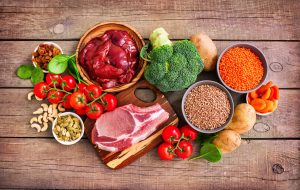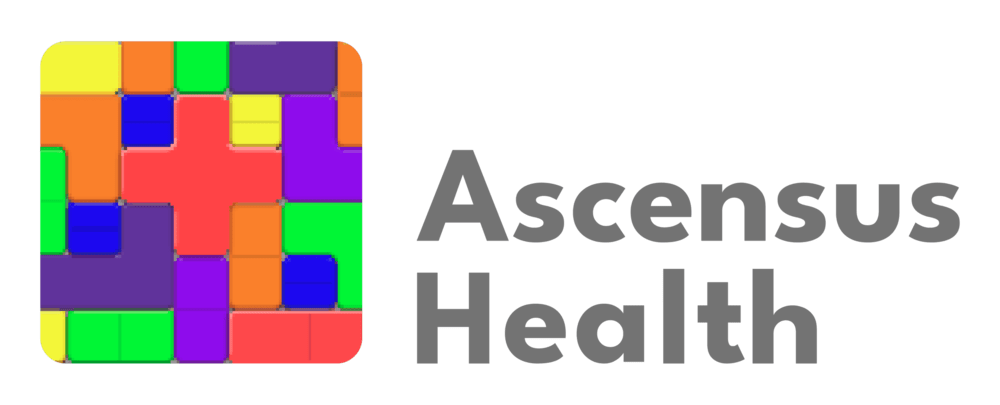Iron is a necessary component for numerous bodily functions. One such example is the synthesis of haemoglobin, DNA, and other enzymes in the body that stimulate different chemical reactions. Haemoglobin, an iron-rich protein found in red blood cells, is essential for carrying oxygen from the lungs to be distributed to different body organs.
Anaemia is a condition when low levels of haemoglobin are caused by iron deficiency. Without treatment, anaemia can be life-threatening as it can deprive the heart and other essential organs of oxygen. Other symptoms like exhaustion, hair loss, and memory loss may develop and impact your quality of life.
Iron deficiency anaemia can be caused by any interference with the processes during iron metabolism, such as absorption, transport, storage, and use. Those who have experienced significant blood loss from cancers, ulcers, heavy periods and even pregnant women are more likely to experience iron deficiency because their bodies require more iron than usual.
What Happens When Your Body Is Low On Iron?
In the early stages, iron deficiency can be so mild that it goes unnoticed. But as the body becomes more deficient in iron and the condition worsens, signs and symptoms will intensify.
The most common symptoms of iron deficiency include:
- tiredness or lack of energy (lethargy)
- breathlessness
- heart palpitations
- a pale complexion
Less common symptoms include:
- headache
- altered sense of taste
- hair loss
- difficulty swallowing (dysphagia)
- painful open sores (ulcers) on the corners of your mouth
If you experience signs and symptoms that suggest iron deficiency, you should consult a doctor. It is important to see a doctor for an accurate diagnosis through blood tests, other evaluation and treatment instead of taking iron supplements on your own. Self-diagnosis and treatment can be dangerous when excess iron is accumulated in your body, which can lead to further health complications.
How Much Iron Do You Normally Need?
While most people get sufficient levels of iron through their diets, pregnant women, infants, children, teenage girls, and premenopausal women may not.
Based on The Recommended Dietary Allowance (RDA) for iron, the RDA for adults is 8 mg for men and 18 mg for women. In pregnant women, these levels considerably increase to 27 mg per day.
In general, the body needs a total of 1050 mg more iron during pregnancy than it would normally do.
- 350 mg is required by the foetus and placenta
- 450 mg is necessary to meet the increased red blood cell requirements
- 250 mg is lost through blood loss during pregnancy
These amounts equate to an additional 6 mg daily iron needs for pregnant women.
There are 3 main causes of iron deficiency.
- Lack of iron-rich foods in diet. Your body can store iron but it cannot make it. Iron must come from food. Some people need more iron than others. The people who need the most iron are children, teenagers (especially girls), females who have periods, pregnant and breastfeeding women. People who follow vegetarian or vegan diets are also more at risk.
- Trouble absorbing iron. Iron in food is absorbed through the stomach and bowel. Some health conditions affect how much iron is absorbed. If you’ve had surgery, that can also affect how much iron you can absorb.
- Blood loss. If you lose blood through any sort of bleeding, this means you lose iron too. The main causes of excess blood loss are having heavy menstrual periods and bleeding in the stomach or bowel. This may be associated with taking medications or other anti-inflammatory medicines, ulcers, bowel polyps or cancer. Other causes can include losing blood due to surgery (post-surgery blood loss), or gut conditions such as inflammatory bowel disease.
Iron-Rich Foods

Most individuals get their daily iron requirements from food. Haem iron and non-haem iron are the two forms of iron that can be found in food. Non-haem iron is primarily found in plant-based diets, and haem iron is found in meat, fish, and eggs. Meat is a richer source of iron than plants because haem iron is more easily absorbed than non-haem iron.
Some of the foods with the highest iron concentrations are beef, chicken, and liver. Other iron-rich foods include seafood such as shrimp, tuna, oysters, clams, and other fish.
For vegetarians, vitamin C rich foods such as citrus fruits can increase absorption of non-haem iron from plant-based foods. Non-haem iron is abundant in vegetables like spinach, kale, broccoli, sweet potatoes, string beans, pumpkin seeds, and peas.
Is Supplementation Necessary?
Your doctor will first investigate to find the cause of the iron deficiency. This is to check whether a serious disease could potentially be causing the problem, and provide the right treatment for you.
To bring your iron levels back to normal, your doctor may recommend that you:
- Consume foods that are rich in iron
- Eat more foods with Vitamin C for better iron absorption, and less foods and drinks that stop you absorbing iron i.e. calcium, fibre, tea, coffee and wine
- Take iron tablets or liquid iron supplements
- Receive an intravenous iron infusion or blood transfusion. Intravenous Iron Therapy is a procedure where iron is administered into the body through the vein.
Conclusion
A balanced diet can provide all of the iron requirements a person needs. If you experience signs and symptoms that suggest iron deficiency, you should consult a specialist for supplementation options (treatment). It is important to see a doctor for an accurate diagnosis through blood test, other possible evaluation and treatment instead of taking iron supplements on your own.


